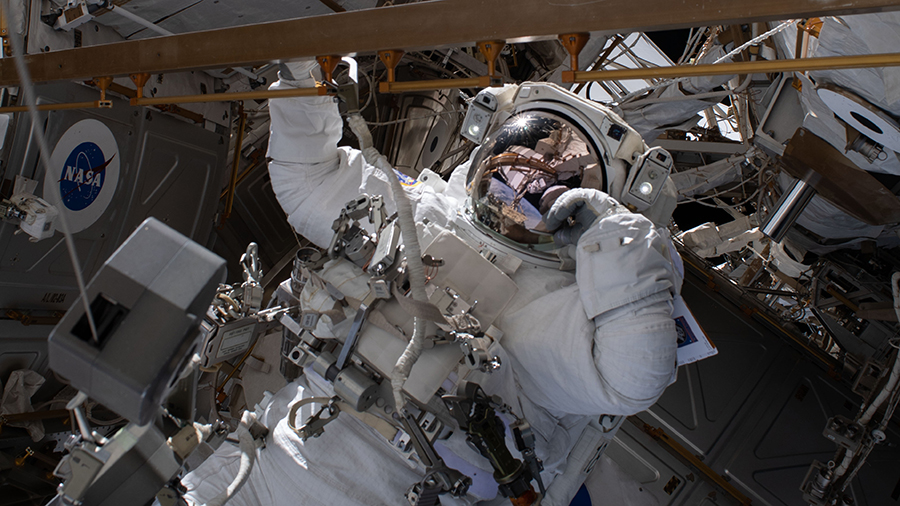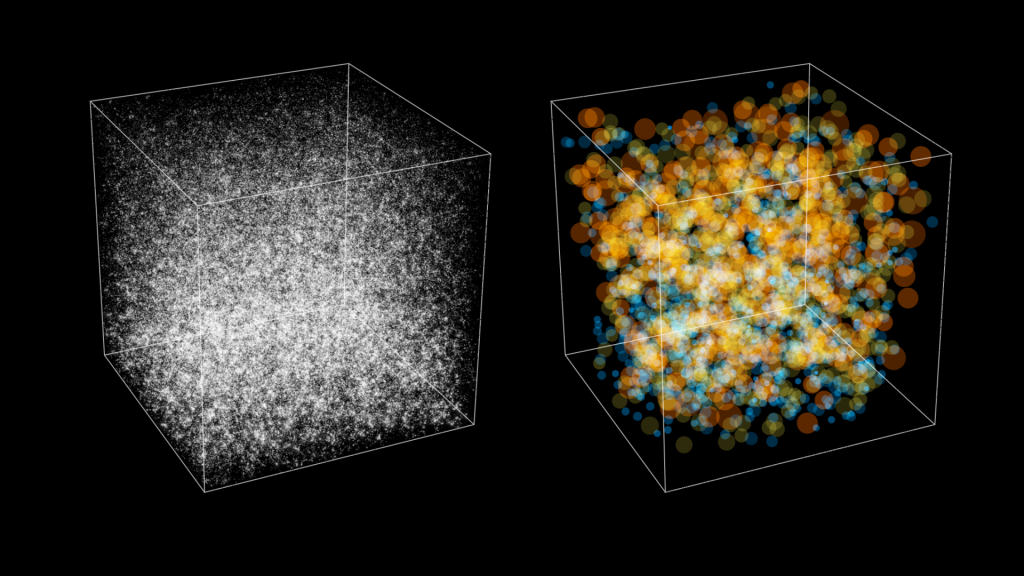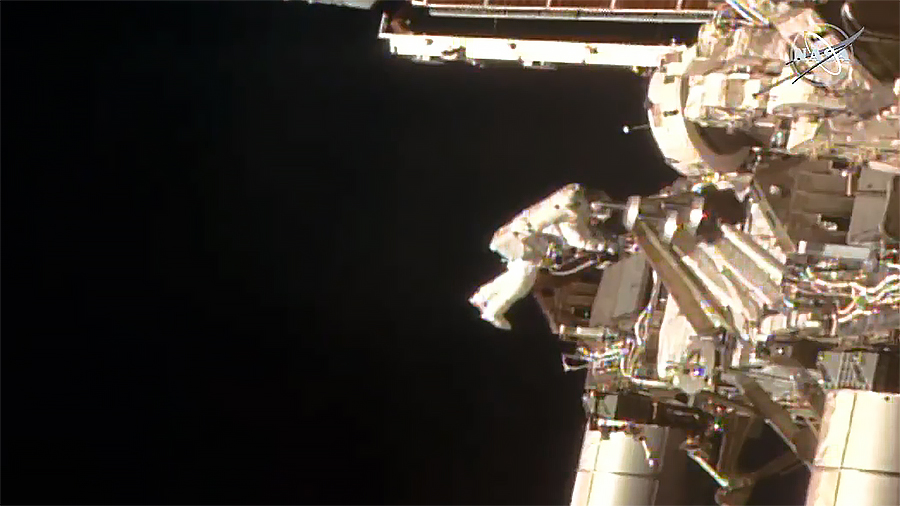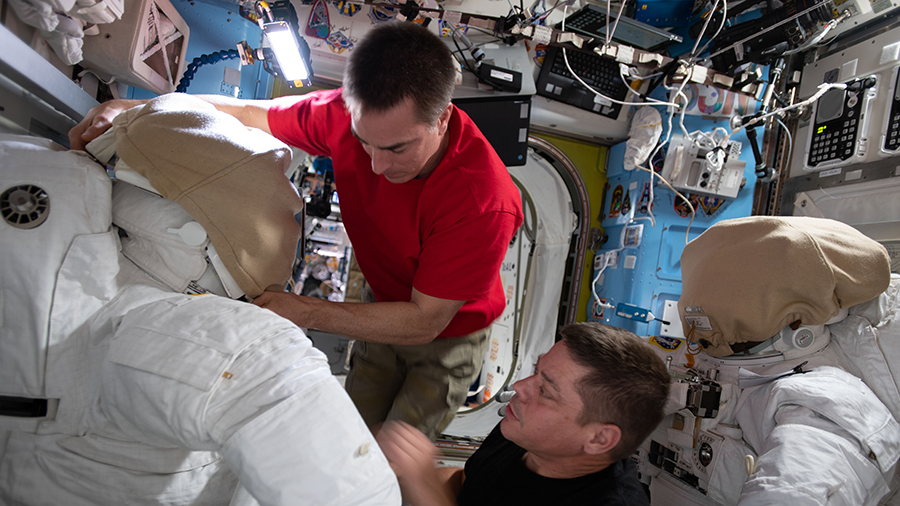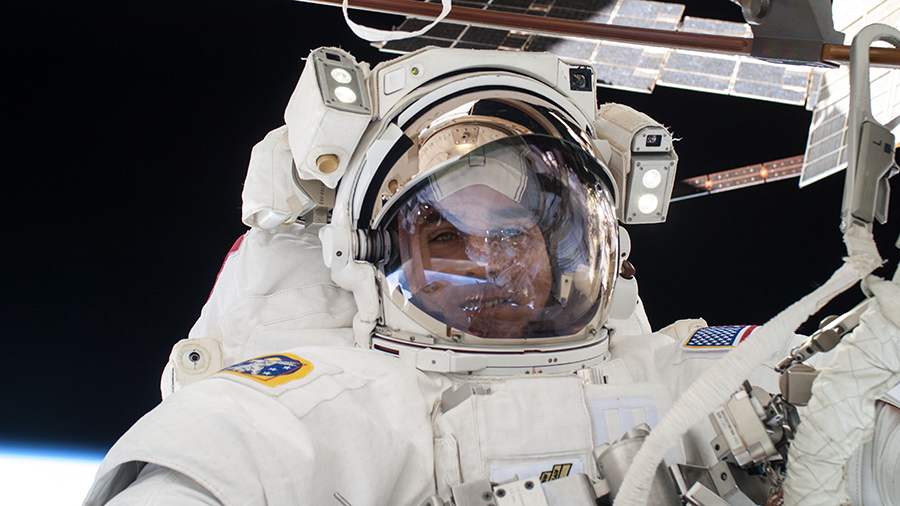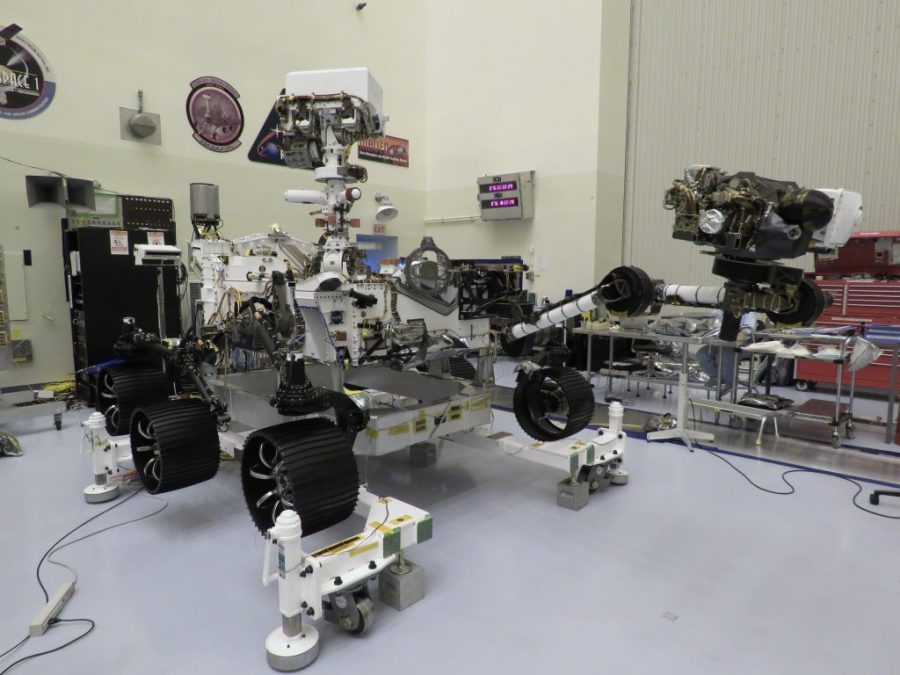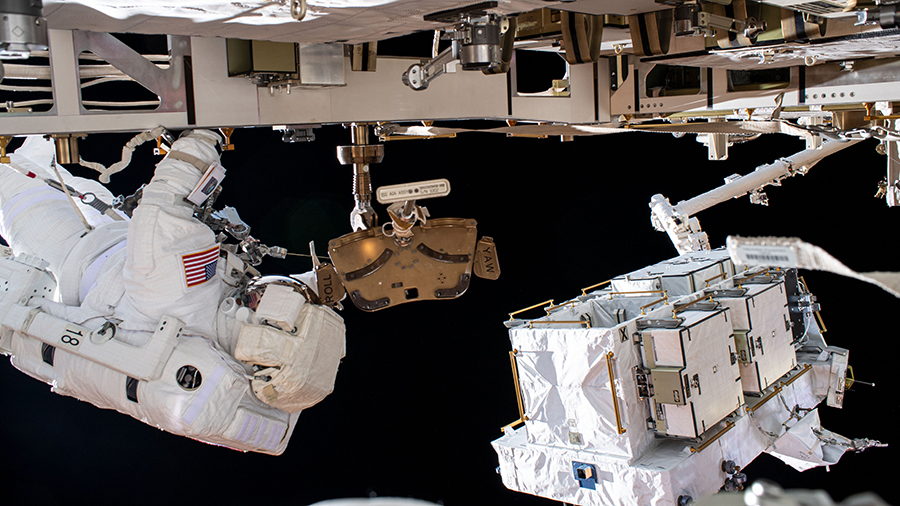Spacesuit checks were on the schedule today for the Expedition 63 crew following a spacewalk to replace aging batteries on the International Space Station. The orbital residents also juggled a variety of science activities. NASA astronauts Chris Cassidy and Bob Behnken are back to work today after Wednesday’s spacewalk to swap batteries and route cables …
Astronauts Check Suits Following Spacewalk
